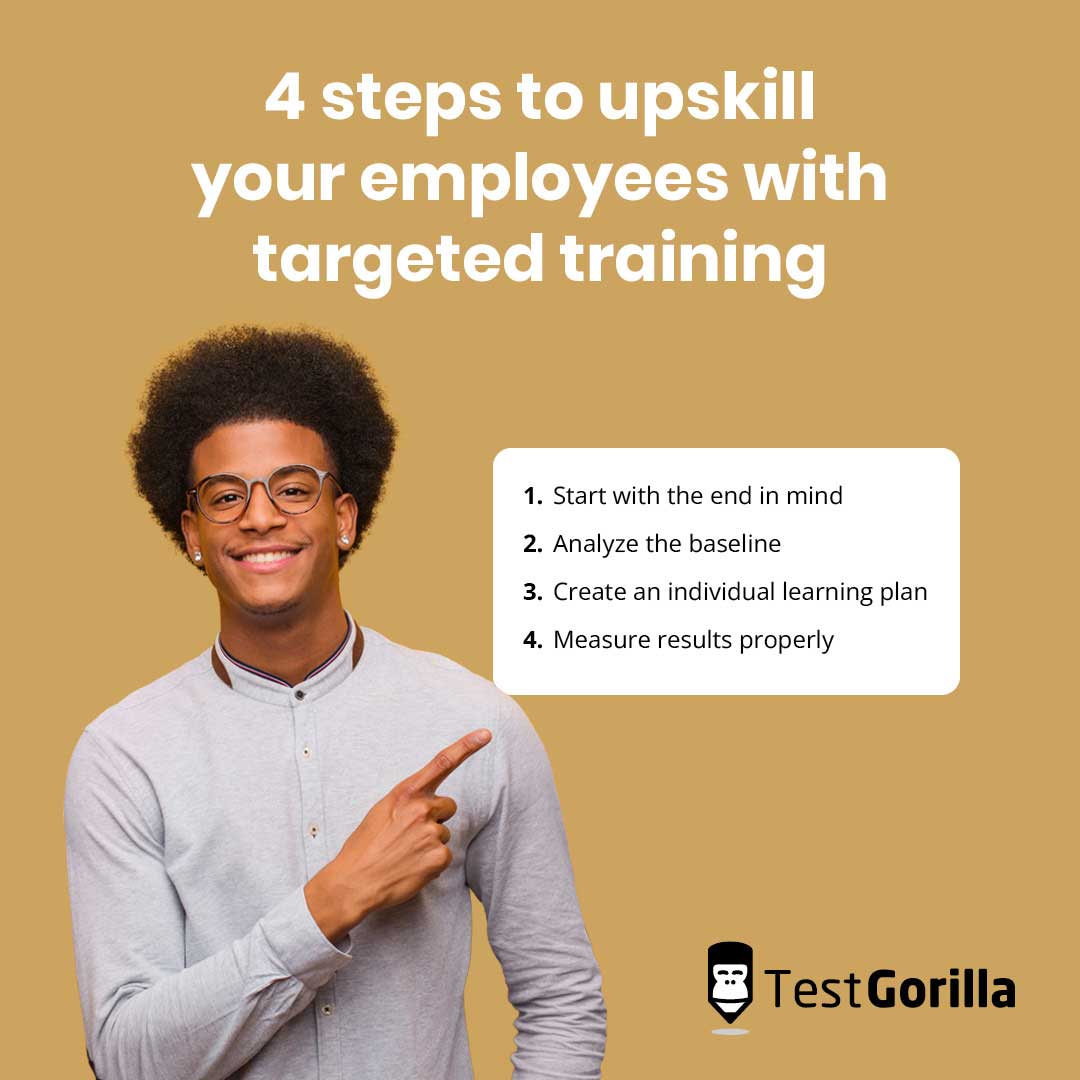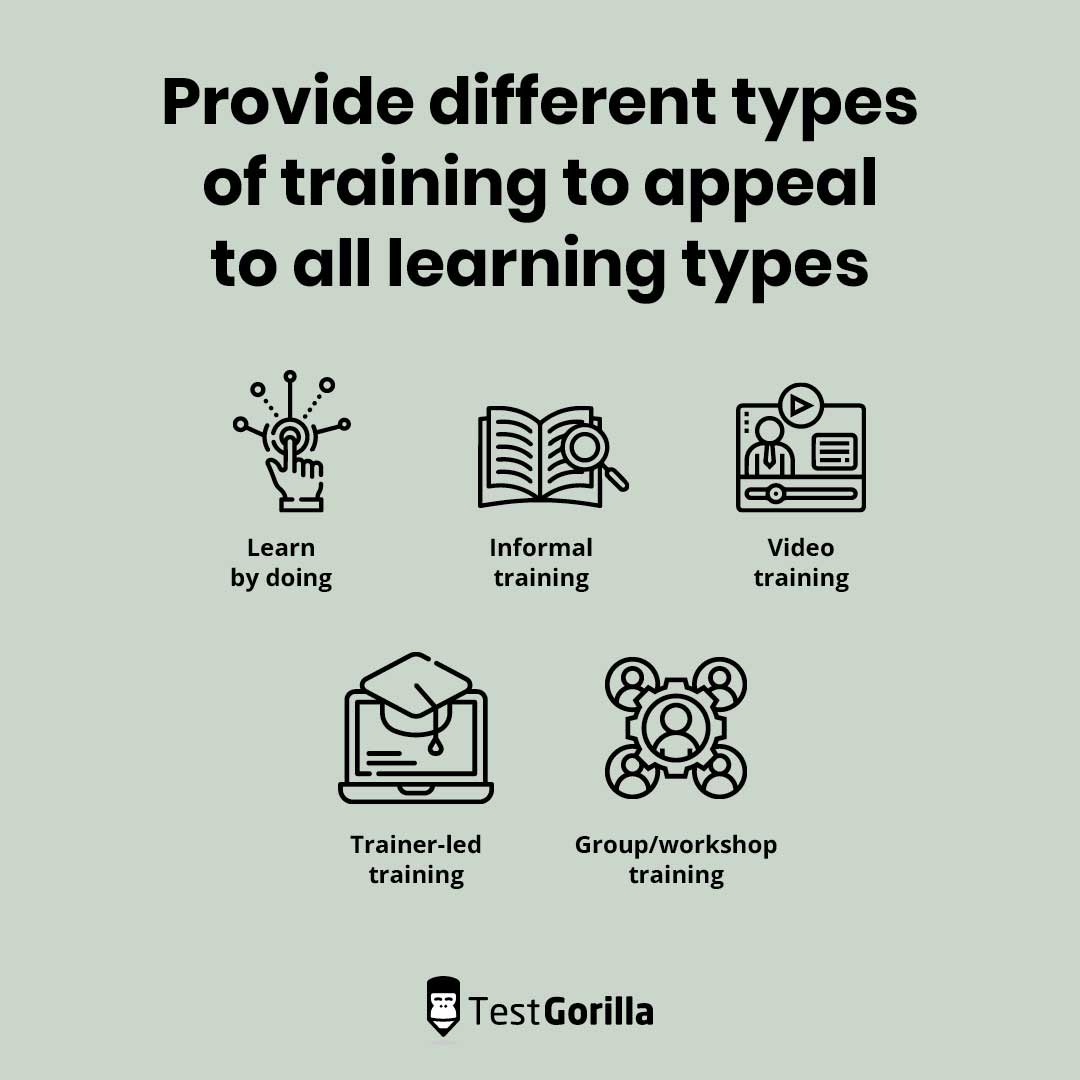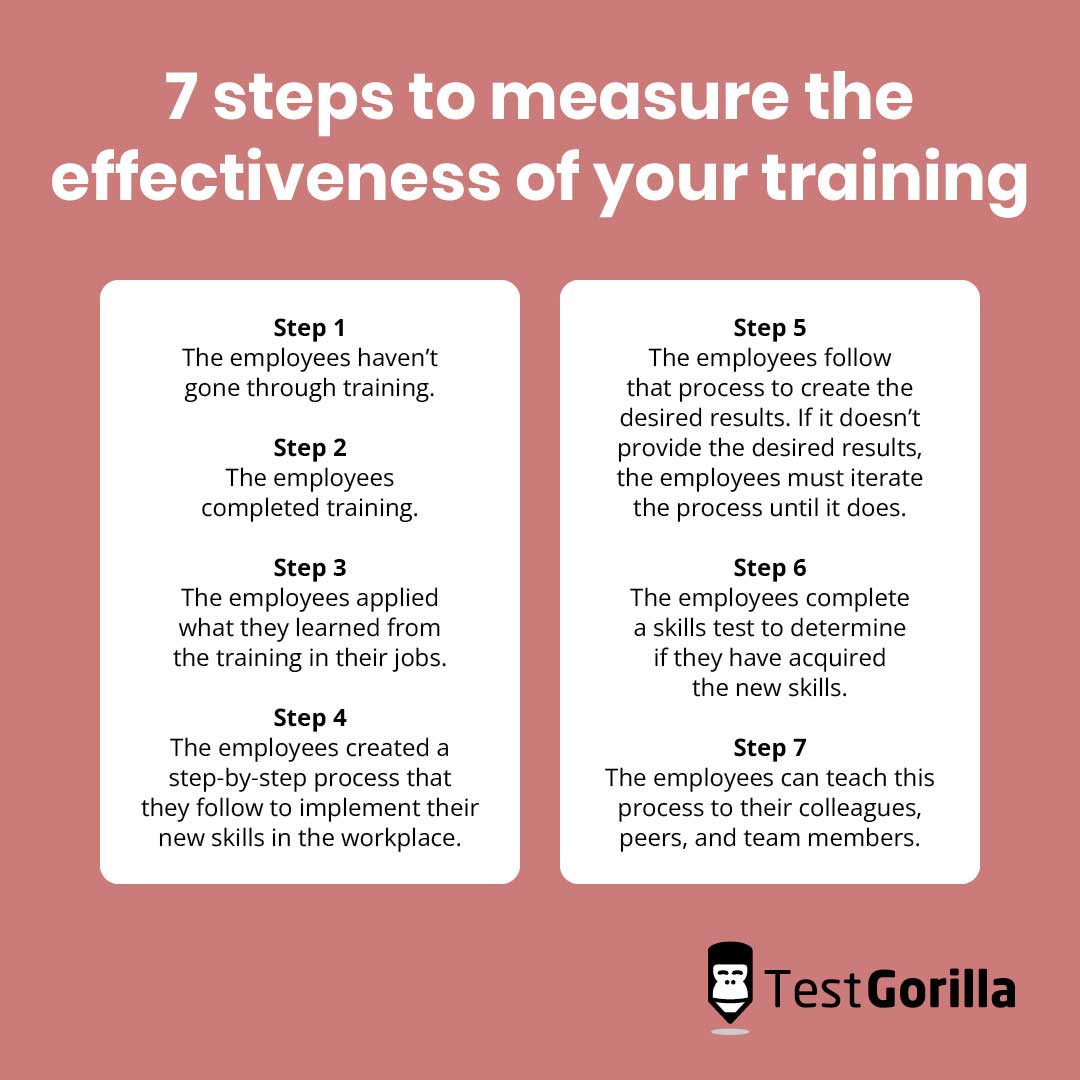No company can succeed without the knowledge and skills of its employees. That’s why it’s imperative that you invest in their learning and development to keep their skills up to par. You can achieve this with targeted training.
But how do you use targeted training effectively?
This article will go through all the ins and outs of upskilling your employees with targeted training. Let’s start by explaining what targeted training is.
Table of contents
What is targeted training?
Targeted training is a set of formal and informal activities that an organization uses to upskill its employees so that they can achieve its goals. Upskilling is critical in today’s business world.
According to the World Economic Forum, the half-life of a skill is only five years. That means that your employees’ skills will only be half as valuable in five years as they are today.
You need to continuously train your employees, or you’ll risk falling behind your competitors.
With that in mind, let’s go over the exact process you can use to upskill your workforce with targeted training.
How to upskill your employees with targeted training
You need complete the following steps to upskill your employees properly:
Start with the end in mind
Analyze the baseline
Create an individual learning plan
Measure results properly
Let’s take a look at each of these steps in detail.
1. Start with the end in mind
Starting with the end in mind means defining your organization’s goals and needs before you begin training employees. You need to know where your business is heading and what skills your employees need to reach its goals.
Once you know your objectives, you’ll have an idea of what skills you need to train your staff to develop.
2. Analyze the baseline
Analyzing the baseline is about defining where your company is currently in terms of its employees’ skills. This will help you understand the gap between your employees’ current and desired skills.
You can then determine what kind of action plan you need to make to close this gap. If there’s a small difference between your staff’s current and desired skills, you can resolve it by making small action plans. But if the skills gap is wide, you’ll need to rehaul your entire training and development process to upskill your employees.
The best way to analyze your employees’ current skills is to give them skills tests. Skills testing is an objective method for evaluating the current capabilities of your staff.
Once you’ve defined your desired endpoint and assessed your workers’ current abilities, it’s time to make individual learning plans for them.
3. Create individual learning plans
You should treat all of your employees fairly but not the same. You need to implement equity, which isn’t about providing more support but rather different kinds of support.
As a business, you must provide all the tools your employees need to get from point A (the starting point) to point B (the end goal).
When creating individual learning plans, keep in mind the following differences between employees that can affect the type of support you should provide to them:
Cultural differences
Geographical location
The languages they speak
Current skill level in a particular skill (newbie, junior, or senior level)
Access to technology
Also, keep in mind that people can be auditory, visual, or kinesthetic learners. Consider implementing different types of training to appeal to all three learning types.
The following are some types of training you can provide:
Learn by doing. This is learning on the job by performing the actual duties of the role.
Informal training. Informal training can happen outside the workplace as well. For example, employees can read educational articles, volunteer in other organizations, or watch videos to develop new skills.
Video training. You can provide your employees with massive open online courses through sites like Udemy or Coursera.
Trainer-led training. You can hire an instructor to come to your workplace and lead training sessions.
Group/workshop training. Workshops require a lot of time and preparation to implement, but they can be one of the best ways to upskill employees. That’s because most workshops use simulations that closely resemble real tasks employees will need to perform.
4. Measure results properly
The last step when it comes to upskilling your employees is analyzing if the training was successful. This is where most businesses struggle. The company organizes a training session, the employees attend it, and that’s that.
The problem is that you have no idea if the training was effective in teaching skills to your employees and if they have, in fact, learned anything.
It might seem difficult to measure the effectiveness of your training. For example, how can you measure Microsoft Excel skills properly?
To measure the effectiveness of your training, use the following seven-step metric:
Step 1. The employees haven’t gone through training.
Step 2. The employees completed training.
Step 3. The employees applied what they learned from the training in their jobs.
Step 4. The employees created a step-by-step process that they follow to implement their new skills in the workplace.
Step 5. The employees follow that process to create the desired results. If it doesn’t provide the desired results, the employees must iterate the process until it does.
Step 6. The employees complete a skills test to determine if they have acquired the new skills.
Step 7. The employees can teach this process to their colleagues, peers, and team members.
Use targeted training to ensure your employees have all the right skills
Targeted training is a great way to upskill your employees; just don’t forget to measure the start and end points. The best method to achieve this is using skills tests. We have a test library of more than 260 scientifically created tests that you can use to evaluate your employees’ abilities.
Don’t leave upskilling your employees to chance – use targeted training and our skills tests to improve the effectiveness of all your employees. Sign up for a free demo to find out more about how TestGorilla’s skills assessments can help you upskill your staff.
Related posts
Hire the best candidates with TestGorilla
Create pre-employment assessments in minutes to screen candidates, save time, and hire the best talent.
Latest posts
The best advice in pre-employment testing, in your inbox.
No spam. Unsubscribe at any time.

Hire the best. No bias. No stress.
Our screening tests identify the best candidates and make your hiring decisions faster, easier, and bias-free.
Free resources
This checklist covers key features you should look for when choosing a skills testing platform
This resource will help you develop an onboarding checklist for new hires.
How to assess your candidates' attention to detail.
Learn how to get human resources certified through HRCI or SHRM.
Learn how you can improve the level of talent at your company.
Learn how CapitalT reduced hiring bias with online skills assessments.
Learn how to make the resume process more efficient and more effective.
Improve your hiring strategy with these 7 critical recruitment metrics.
Learn how Sukhi decreased time spent reviewing resumes by 83%!
Hire more efficiently with these hacks that 99% of recruiters aren't using.
Make a business case for diversity and inclusion initiatives with this data.






















